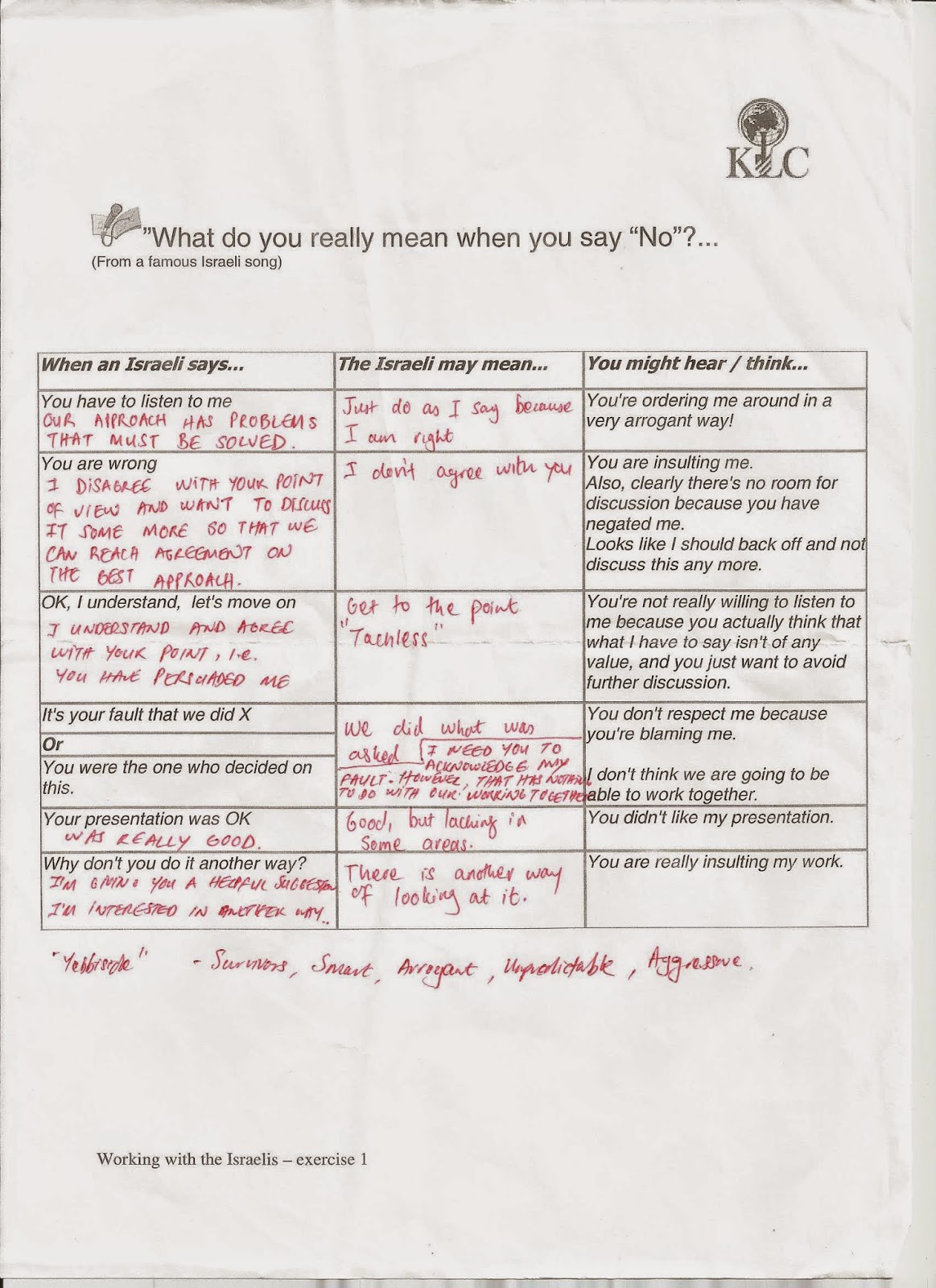I'm in the process of rounding up all my reports on my self from various psychometric tools & frameworks that I had to use in the course of my professional life, and share them openly on this blog. I did make a start some time ago with these two posts from a few years ago:
This week, I experienced another framework called the "Enneagram" which I also will aim to share on this blog.
As I dug through my old records, I found one particular course that brought back some fond memories: Working with the Israelis :-)
Working with Israelis, a One Pager Cheat Sheet
So I worked with a lot of Israelis, all levels: engineers-to-directors, and it was quite exciting and a thrill, personally & professionally. I really didn't let any personal/religious biases get in the way of working professionally, and actually developed some really good relationships that I'm happy to call them my friends...where there is code, there are no barriers....all you need is code :-)
So if you ever confronted with working with an Israeli, here is a handy table to help get you to understanding the experience:
 |
| Cheat Sheet |
Cross-Cultural Awareness is becoming increasingly important in a Connected World
 In the years 2003-2011, I worked with a company that was truly global. We had software teams all around the world: North America, Canada, United Kingdom, Paris, Denmark, Australia, Israel, India, Korea & China. The company went on a global training drive to address the issue of working with the various cultures. The company partnered with the folks from TMC CulturalNavigator, an online system that we could use to learn about the people from all parts of the world, however, specifically tailored for the regions we operated in.
In the years 2003-2011, I worked with a company that was truly global. We had software teams all around the world: North America, Canada, United Kingdom, Paris, Denmark, Australia, Israel, India, Korea & China. The company went on a global training drive to address the issue of working with the various cultures. The company partnered with the folks from TMC CulturalNavigator, an online system that we could use to learn about the people from all parts of the world, however, specifically tailored for the regions we operated in.
Each person in the company had to complete the online questionnaire (like all these psychometric questions) to gauge the type of person you are. The results were mostly online for people to access, as it was useful information to have to hand especially when you're meeting a colleague for the first time, or have a high-profile meeting to attend and you want to get a sense of the people, etc, etc.
I applied the tools quite often, found it extremely useful and handy to have around...
In addition to the online tool, we had coaches come in and talk around this system, which is called Cultural Orientations Index - I will write about my own results from 2007 in a follow-up post, the COI contains the following dimensions:
I will expand on this in follow-up posts...



